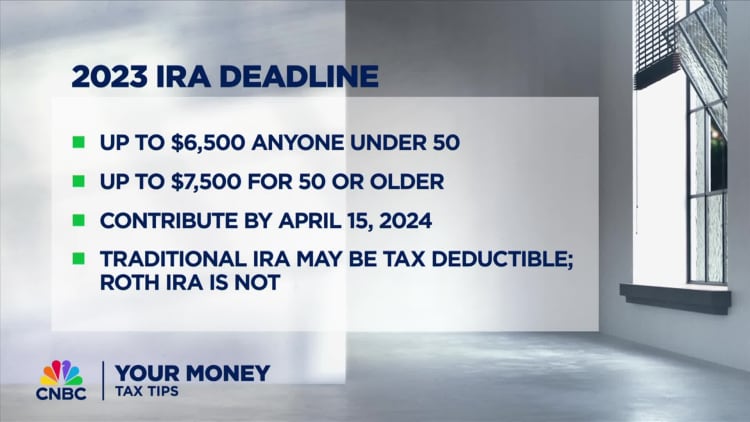File your return by April 15 even if you can’t pay
If you can’t cover your taxes in full, you should still file your return by April 15 and pay what you can, according to the IRS.
Here’s why: “Your interest and penalties are compounding quicker” if you owe taxes and don’t file, said Eric Bronnenkant, certified financial planner and head of tax at Betterment, a digital investment adviser.
The failure-to-file penalty is 5% of your unpaid taxes per month or partial month, capped at 25% of your balance due. By comparison, the late payment penalty, or the failure-to-pay penalty, is 0.5% per month or partial month, with a maximum fee of 25% of unpaid taxes.
The IRS also charges interest based on the current rates.
The IRS has ‘various payment options’
If you still have a tax balance by April 15, you can apply for “various payment options” online and get an “immediate response” of acceptance or denial, the IRS said in a news release on Friday.
IRS online payment plans, or “installment agreements,” include:
- Short-term payment plan: This may be available if you owe less than $100,000 including tax, penalties and interest. You have up to 180 days to pay in full.
- Long-term payment plan: This may be available if your balance is less than $50,000 including tax, penalties and interest. You must pay monthly, and you have up to 72 months to pay off the balance.
You can apply for either plan online, by phone or by mail by sending Form 9465. However, experts say the online option is quick and easy.
“They’re trying to get people back in the system,” Bronnenkant said.
However, you can’t have multiple payment plans from different tax years.
“They don’t want people on continuous payment plans,” he said.
While you will still accrue interest and late-payment penalties after April 15, the failure-to-pay penalty is “cut in half” under an installment agreement, according to the IRS.
You can learn more about the IRS plans, including setup fees and payment options, here.








